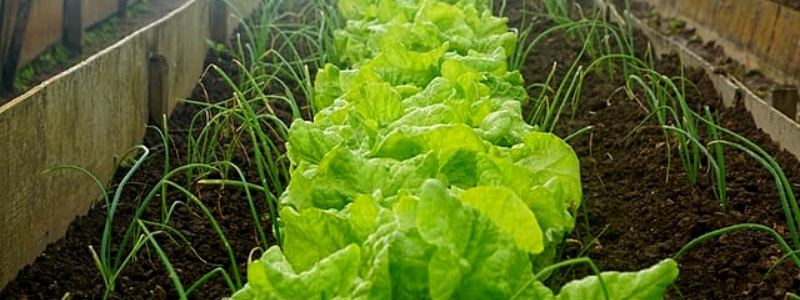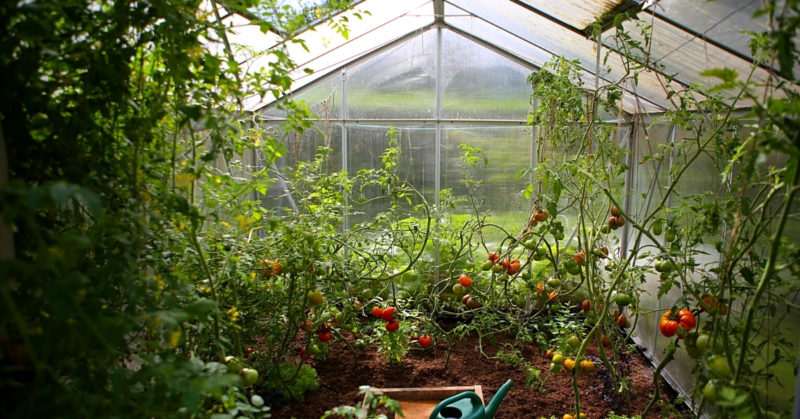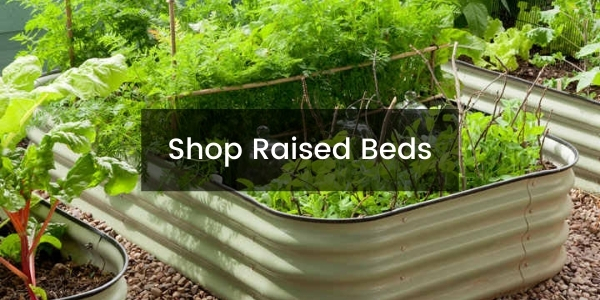Here we will outline all of the benefits to growing your own produce, along with some handy tips to get you started and seeing results.
Is it better to grow from seeds or plants?
This really depends on how much time, patience and money you have to invest in growing your own vegetables. Growing from seed is by far the most economically friendly however it takes longer than plants to produce vegetables.

Growing from seed is said to be the most rewarding too, you will have to care for and nurture your seedlings until they mature. Whether you are sowing into seed trays and propagators, or directly into the ground, there is nothing more satisfying than a glorious display of colour and scent, or a bumper crop of tasty fruit and veg, that you have grown yourself.
What is the best way to grow seeds?
In a greenhouse/ conservatory or on a windowsill
Usually known as a half-hardy seed, growing in a greenhouse or on a windowsill then potting on and planting outside at a later stage when the danger of frost has passed is a great way to grow plants in a temperature-controlled environment. There are lots of easy to use indoor seed propagation products available.
Directly into the ground
Sowing directly into the ground where they are intended to grow – the quick, easy and very low-cost way to fill your garden with vibrant colour and tasty vegetables.
Where is the best place to grow vegetable plants?
You might be surprised to know but you really don’t need a big garden to start growing your own vegetables; any space will do as long as it’s a sunny open spot.
Larger Spaces
If you have a garden or allotment, be it big or small, you can make a dedicated vegetable patch. Alternatively, you can grow within a mixed bed with flowers, in pots on the patio, in outdoor window boxes and even your kitchen windowsill will provide you with a lovely crop of herbs, tomatoes and peppers.
Smaller Spaces
If you are short of space then use large pots and containers. Tomatoes grown in hanging baskets, runner beans grown up ‘wigwams’ of bamboo canes and even pumpkins and aubergines can now be grown in pots!
Raised beds also provide an attractive and practical alternative to growing in the garden soil due to the fact you can select the positioning, Eg. A sunny spot on the patio. These will also help provide earlier and longer cropping of your veg.
What vegetables can I grow in my garden?
There is a wide range of vegetables that are quick and easy to grow. Whether you have pots on the patio, a window box or a dedicated vegetable plot, here are some of the easiest and most rewarding vegetable varieties to get you started.
What is the best way to start seeds?
Here are some easy ways to start growing your own Packeted Seed, Seed Mats, Seed Tapes or Seed Kits!
Packeted Seed

- Fill a seed tray with good quality compost, leaving a gap of about 1cm at the top of the container.
- Scatter seed evenly, pressing it gently into the surface. Cover larger seeds with a light covering of compost. Then gently water your seeds and keep them in a warm, draught-free spot indoors (see back of packets for more information).
- Items such as Salad Leaves, Beetroot, Carrots, Parsnips etc. can be sown directly where they are to grow.
Seed Tapes

- The easiest way to grow your vegetable seeds. With a stick or tool handle, make a ‘drill’ or groove in your garden soil, and then simply lay your tape along the groove and cover with soil. Water the ground well. No thinning out of the seedlings as they grow is required as the seed is pre-sown into the tape which leads to healthier, stronger plants as there is no disturbance to the roots. See back of packets for full information.
Learn how to use seed tape in this quick & easy video from Rob Smith at Suttons.
Some seeds may need to be started indoors or undercover (excluding seed tapes) please check individual packets for full sowing details.
When should I transplant my seedlings?

When the seedlings are large enough to handle, transfer to larger pots (8cm (3″) is usually the best size to use for this job) or into trays of compost to allow them to grow and develop more easily. Do this by gently holding the top leaves and carefully ease out the seedlings from their original growing container (if using a seed kit remove the pellet and seedling together).
Use a pencil (or even a teaspoon handle) to create a hole in the ‘growing on’ pots or containers. Place your baby plants into prepared holes taking care not to damage the roots.
Gently firm the compost around the roots and stem to leave the first leaves just above the surface. Water gently keep them in a warm spot indoors and protect from direct sunlight for the first 3-4 days.
How do you plant seeds outside?
There are 3 easy methods to sow your seed. Outlined below, choose one that you are most comfortable with and suits your needs the most.
Whichever method of seed sowing you choose, water the seedbeds with a watering can that has a fine rose. This will prevent a wash effect that would disturb the seeds.
Broadcast Method
Scatter your seed on the surface of the soil in a circular motion, to cover the space available. These can be raked into the surface or covered lightly with compost and pressed down gently.
Sow in rows
This method is useful with fine seeds such as Carrots. Sow thinly in a pre-marked ‘drill’ (shallow groove). The seedlings may need to be thinned later to allow enough space for your veg to grow. Larger seed such as Beetroot is easier to handle and can be planted singly along with a ‘drill’- this reduces the need for thinning out later on.
Seed Tapes
The easiest way to grow your seeds. In a pre-marked ‘drill’ simply lay your tape along the groove and cover with compost. No thinning is required which leads to healthier, stronger plants as there is no disturbance to the roots.
Getting the most out of your vegetable plot
If you are lucky enough to benefit from a garden or allotment and would like to get the most from it we recommend that you move each section or family of vegetables within your plot each year – this is called “crop rotation”. This will help reduce pests and diseases, maintain soil fertility and nutrients, and reduce the need for fertilisers.

When planning your plot you will firstly need to decide on the vegetables you want to grow (and eat), giving consideration to the amount of space you have available. If possible you should aim to produce vegetables all-year-round without shortages or excess. The area chosen should be divided into three equal sections.
Frequently Asked Questions
All seeds are different. It is best to go by the individual packet instructions.
This depends on the seed. Some need to be sown on the surface as they need light to germinate. Others need darkness. As a ‘rule of thumb’ cover the seeds with a depth of compost the same height as the seed, but again, it’s best to go by the packet instruction.
Sowing times on packets are a guide only, but sow too early and your seeds may not germinate and too late your plants may not have a long enough growing season to produce those tasty vegetables.
Very much so – always get your seed from a reputable seed company as they should have run quality tests on the seed to ensure good germination and trialled the variety to make sure it produces the plant shown on the packet.
No, but some plants are better to grow together than others – these are sometimes called ‘companion plants’ and can be used to deter pests. e.g Onions grown with cabbages helps to deter the cabbage fly.
Chemical controls are available – look in your local garden products retailer
Physical controls – Eg. using special garden fleece to keep of the moths/butterflies from laying their eggs on the crops, or going round at night with a torch and picking off slugs and snails by hand!
Biological controls – now available for both problems Suttons recommends the Nemasys Biological Pest Control range of products.
For more specific information regarding different plant varieties, check out the rest of our insightful growing guides section of the hub.
Last Updated on May 13, 2025 by Suttons Horticultural Team






